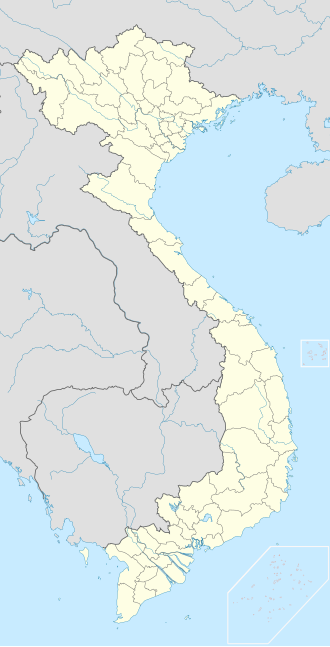Top Qs
Timeline
Chat
Perspective
Cát Hải special zone
Commune in Red River Delta, Vietnam From Wikipedia, the free encyclopedia
Remove ads
Cát Hải [kaːt˧˥:ha̰ːj˧˩˧] is an archipelago in the Gulf of Tonkin. It constitutes fully as Cát Hải Special Zone of Hải Phòng City[1] (Vietnamese: Đặc khu Cát Hải trực thuộc thành phố Hải Phòng) belonging to Hải Phòng city in the Red River Delta region of Vietnam.
Remove ads
Remove ads
History
Summarize
Perspective
The territory of Cát Hải rural district (huyện Cát Hải) only consists of two archipelagos Cát Bà and Long Châu. In particular, the area of Cát Bà island is almost the area of the special zone.
All Cát Hải area's knowledge before the XVIII century was legendary and had very little things recorded by royal historians. However, according to the administrative documents of Hải Phòng city, this territory in the past included two archipelagos as Các Bà (the ladies) and Cửa Đức Ông (the gentlemen).[2][3] Over time, those names were wrongly called by folk to become Cát Bà and Long Châu.
Middle Ages
According to Đồng Khánh địa dư chí lược, at the beginning of the XIX century, the territory of Cát Hải rural district was two cantons Đôn Lương and Hà Liên, belonging Hoa Phong rural district (huyện Hoa Phong), Sơn Định prefecture, Quảng Yên province. Nghiêu Phong district has many different names : Động Phục Long, Ân Phong, Chi Phong.[note 1] Until the first year of Thiệu Trị (1841), it was renamed Nghiêu Phong to avoid the real name of Dowager Queen Hồ Thị Hoa.
Since the years of Đồng Khánh, Nghiêu Phong rural district (huyện Nghiêu Phong) has included three cantons Đôn Lương, Hà Liên and Vân Hải.
XX century
On August 19, 1890, Tonkinese viceroy Hoàng Cao Khải issued a decree to change Nghiêu Phong from a rural district into a prefecture. Because of that, Vân Hải canton has been raised to Vân Hải rural district, at the same time, Đôn Lương was merged with Hà Liên to become Cát Hải rural district. Its capital seated in Cát Bà street (phố Cát Bà), where was later expanded to the township (đại lí Cát Bà), then the town (thị xã Cát Bà).[note 2]
XXI century
On April 22, 2025, to meet promptly the Plan to arrange and merge administrative units in Vietnam 2024–2025 by the Government of Vietnam, the People's Committees of Hải Dương Province and Hải Phòng City passed a Resolution[4] on the dissolution of all rural-district level administrative units in new Hải Phòng City,[note 3] followed by another Resolution[5] on the merger of communes and the establishment of new communes with their new names.
According to the political document officially published for the press, Cát Hải island-district was also dissolved. The its entire area and demography have been transformed to commune-level administrative unit, which is called as Cát Hải Special Zone of Hải Phòng City (Đặc khu Cát Hải trực thuộc thành phố Hải Phòng). Cát Hải special zone is directly under the management of new Hải Phòng City.
Remove ads
Geography
As of 2018 the Cát Hải special zone had a population of 43,187. The special zone covers an area of 295 km2 (114 sq mi). Its capital lies in Cát Bà island.
Economy
The islands are subject to major land developments. Vinfast has built an automobile factory on the Southern half of the island,[6] and Sun Group is developing a holiday resort on the northern half. A 5.44 km long bridge - the longest sea crossing in Vietnam - connects the island to Hai Phong.
See also
Wikimedia Commons has media related to Cat Hai District.
Notes and references
Further reading
Wikiwand - on
Seamless Wikipedia browsing. On steroids.
Remove ads





